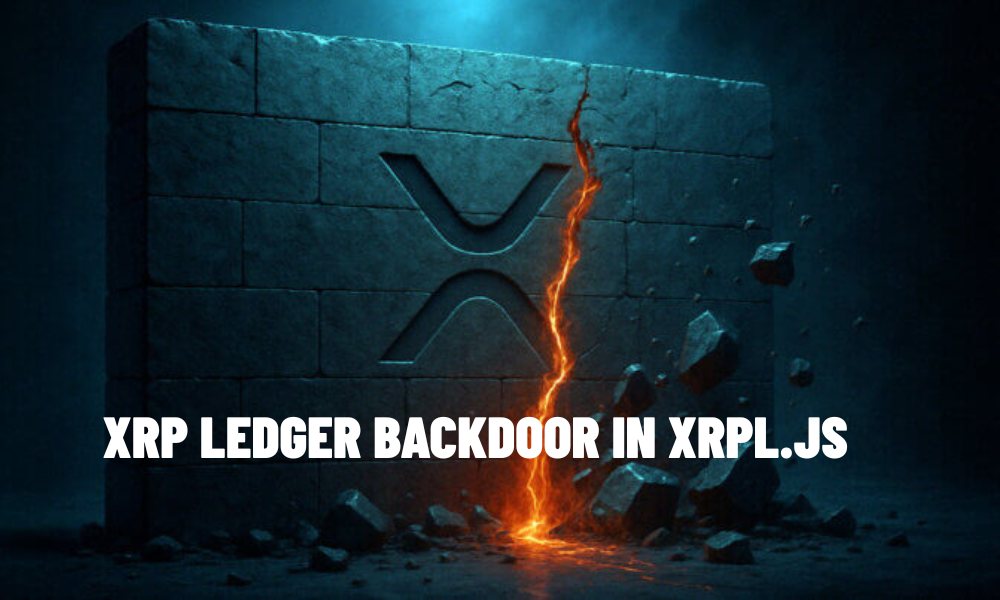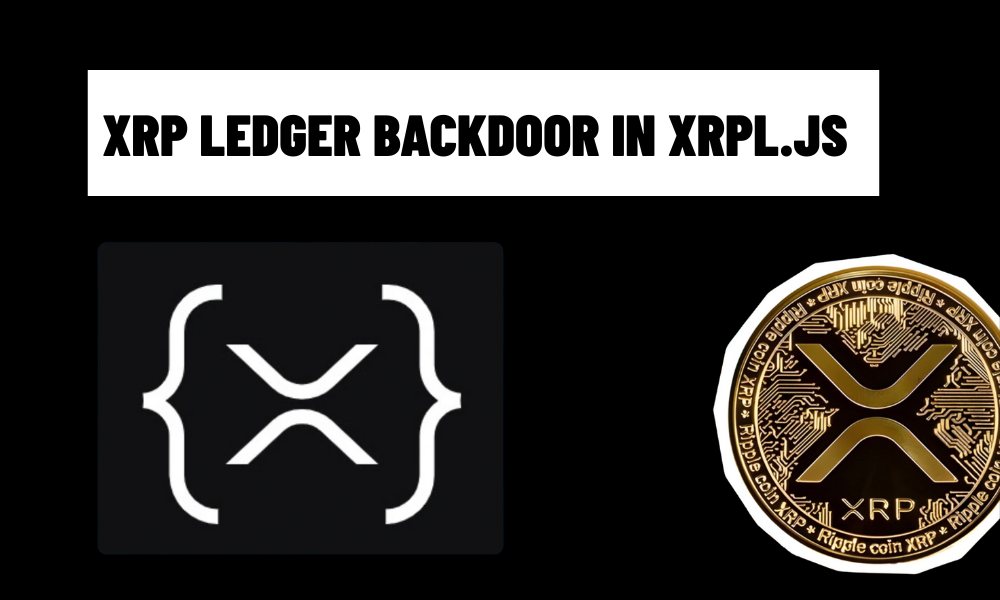XRP Ledger Backdoor in xrpl.js: What You Need to Know
The XRP Ledger, a decentralized blockchain known for its fast and cost-effective transactions, recently faced a critical security threat. A malicious backdoor was discovered in the xrpl.js library, a widely used tool for interacting with the XRP Ledger, boasting over 140,000 weekly downloads. This vulnerability could allow hackers to steal private keys, compromising user funds and blockchain integrity. In this article, we explore the details of this backdoor, its implications, and actionable steps for developers and users to stay secure.
Contents
What Happened?
The XRP Ledger Foundation announced the discovery of a backdoor in recent updates to the xrpl.js library. This malicious code was designed to extract private keys from users, enabling attackers to access wallets and execute unauthorized transactions on the XRP Ledger. Given the library’s widespread adoption, the vulnerability posed a significant risk to the ecosystem, including decentralized applications (dApps), exchanges, and individual users relying on xrpl.js for blockchain interactions.

The backdoor was identified promptly, showcasing the proactive vigilance of the XRP Ledger’s security team. Without swift intervention, this exploit could have led to substantial financial losses across the network.
How Was It Addressed?
Upon discovering the issue, the XRP Ledger Foundation took immediate action:
-
Public Disclosure: The foundation issued a transparent announcement, alerting developers and projects using xrpl.js about the vulnerability.
-
Patch Release: Engineers released an updated version of the library, overwriting the compromised packages to eliminate the backdoor.
-
Community Guidance: Developers were urged to upgrade to the latest, secure version of xrpl.js to mitigate risks.
This rapid response underscores the importance of community-driven security in blockchain ecosystems and the XRP Ledger’s commitment to protecting its users.
Why This Matters
For blockchain enthusiasts, developers, and crypto investors, this incident highlights several critical takeaways:
-
Supply Chain Attacks Are Real: The xrpl.js backdoor is a reminder that even trusted libraries can be targeted. Supply chain attacks, where malicious code is injected into legitimate software, are a growing threat in the crypto space.
-
Private Key Security: Private keys are the cornerstone of blockchain security. Any compromise can lead to irreversible losses, making timely updates and vigilance essential.
-
Ecosystem Trust: The XRP Ledger’s quick response reinforces trust in its governance and security practices, but users must remain proactive in safeguarding their assets.
What Should You Do?
If you’re a developer or user interacting with the XRP Ledger, follow these steps to protect yourself:
-
Update Immediately: Check your project dependencies and upgrade to the latest version of xrpl.js. Verify the package integrity using checksums provided by the XRP Ledger Foundation.
-
Audit Your Systems: Review your codebase and infrastructure for signs of compromise, especially if you used a vulnerable version of the library.
-
Monitor Transactions: Keep an eye on your XRP wallets for unauthorized activity. Use tools like XRP Scan to track transactions in real-time.
-
Stay Informed: Follow official channels, such as the XRP Ledger Foundation’s website or X account, for updates on security patches and best practices.
For non-technical users, ensure that any platforms or dApps you use (e.g., exchanges or wallets) have addressed this issue. Contact their support teams to confirm they’ve updated their systems.

Broader Implications for Blockchain Security
This incident serves as a wake-up call for the blockchain industry. As adoption grows, so does the incentive for attackers to exploit vulnerabilities. Developers must prioritize secure coding practices, regular audits, and dependency monitoring. Meanwhile, users should adopt a security-first mindset, using hardware wallets and multi-signature setups to protect their assets.
The XRP Ledger’s response demonstrates how transparency and collaboration can mitigate risks, but the broader crypto community must continue to innovate in areas like zero-trust architecture and decentralized dependency management to stay ahead of threats.
Conclusion
The xrpl.js backdoor incident is a stark reminder of the ever-present security challenges in blockchain technology. While the XRP Ledger Foundation’s swift action prevented widespread damage, it underscores the need for constant vigilance in the crypto space. By updating to the latest xrpl.js version, auditing systems, and staying informed, developers and users can protect their assets and contribute to a safer ecosystem.
Stay proactive, stay secure, and keep exploring the potential of the XRP Ledger with confidence.